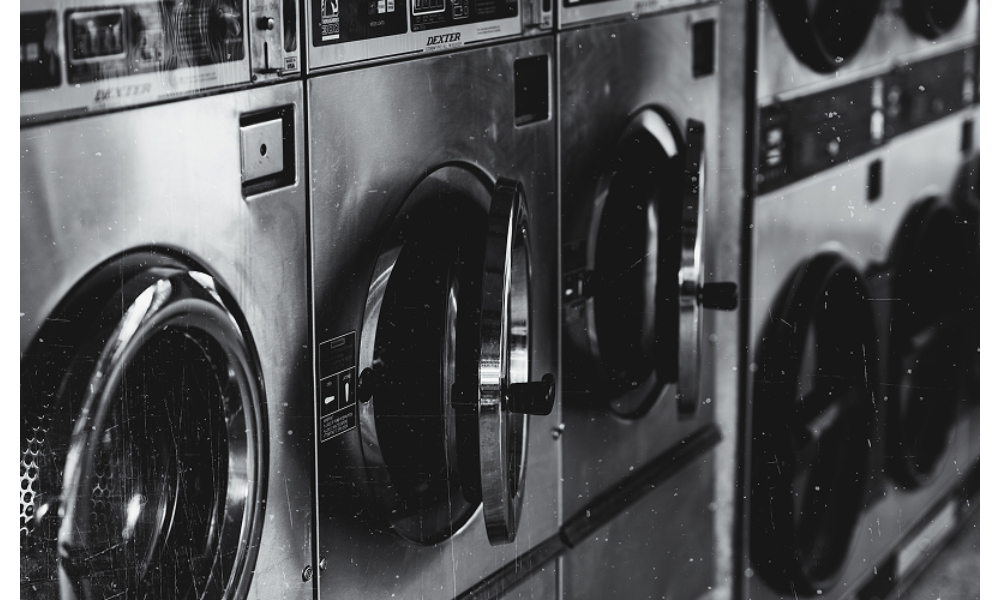Ceiling fans are a household staple, reliably circulating fresh air yearly. Unfortunately, they are often neglected when it comes to cleaning.
Excess dust on fan blades can degrade air quality and make it work harder, thereby escalating power usage.
Cleaning your appliance seems hard because of the debris build-up. However, there are straightforward methods to tidy it up without causing a mess.
Why Regular Fan Cleaning is Essential
Dusty particles on ceiling fans can harm indoor air quality, causing particular issues for people with allergies.
As the fan rotates, it spreads dust and debris throughout the room, which can lead to breathing difficulties and attract pests.
However, the effects of dusty ceiling fans go beyond health concerns. It needs more power to run, which raises electricity costs.
To make matters worse, an unmaintained fan looks messy, taking away from an otherwise comfortable living space.
Regularly cleaning your fixture helps it last longer by reducing wear and tear. This routine also lowers the chance of mechanical problems.
Choosing the Right Tools for a Mess-Free Clean
To expertly clean without creating clutter wherever you go, it is vital to select suitable cleaning supplies.
Begin with microfibre cloths, which are highly effective at trapping fine dust particles without spreading them around.
Not only do they capture a significant amount of dust, but they also contribute to a cleaner environment. This makes them an excellent choice for reducing allergens in your home.
Furthermore, a dust-capturing cover is a handy solution, especially for catching grime that falls during cleaning. This simple trick helps minimise mess, saving you from extra sweeping afterwards.
For hard-to-reach units in tricky spots, an extendable duster is extremely useful. This allows you to clean from a distance without worrying about spills or messes.
When reaching high areas, a sturdy stepladder is also essential to keep you steady and focused.
Ensuring Efficient Ceiling Fan Cleaning
Start by gathering all the essentials. You will need microfiber cloths, a dust cover or an old sheet, a long duster, and a stepladder.
Ensure the fan is switched off and the area underneath is clear. Spread the dust cover or sheet under the fan to catch anything that falls. This prep makes the cleaning process quicker and mess-free.
For a simple cleaning method, try the pillowcase trick. Simply slip an old fabric cover over the required blade and press it down. Next, slowly pull it off to trap the dust inside, preventing it from spreading.
Alternatively, if you have a hoover with a brush attachment, use it for effortless cleaning. It loosens stubborn dust while the vacuum efficiently removes it.
Tackling Sticky Residue
Over time, ceiling fan blades can accumulate sticky residue, especially in kitchens where cooking oils and smoke particles circulate in the air.
Regular dusting is probably not enough to remove these stubborn spots, so a little extra care is needed.
To tackle sticky residue, start by dampening a microfiber cloth with a little cleaning agent. Another option is to utilise warm soapy water.
Proceed with a light wipe of the blades, avoiding excessive dampness, as any extra water can harm the fan.
If you encounter stubborn marks, leave the cloth in place on the spot for a brief time. Doing this will assist in softening the residue before cleaning it off.
Once the sticky areas have been addressed, use a dry cloth to make sure there is no remaining moisture, effectively preventing any streaks or watermarks. This method cleans effectively and helps keep your fan blades looking polished and new.
Establishing a Cleaning Routine
Setting up a maintenance schedule is vital for keeping ceiling fans in optimal working condition and preventing dust build-up in your home.
Keeping your fans in good condition requires routine upkeep, ideally every one to three months. The frequency depends on how often they are used and how quickly dust piles up in your home.
For example, if you have pets or live in a particularly dusty area, more frequent cleaning is advisable. This helps eliminate allergens and reduces dust-related problems.
To make the task easier, consider scheduling fan maintenance alongside other chores like hoovering and wiping down surfaces. Setting a reminder on your phone or calendar can also help you stay on top of it.
Additional Tips for Maintaining Ceiling Fans
Apart from periodic checks, a few more steps can help your ceiling fan stay in great form for a longer time. These straightforward yet powerful suggestions will boost its functionality.
First, consider reversing the fan’s direction during winter. Running it in reverse facilitates the circulation of warm air throughout the room.
Furthermore, utilising air purifiers to capture dust before it becomes airborne can prove beneficial in maintaining your fan’s cleanliness.
Over time, constant use can loosen the screws and fixtures holding your ceiling fan in place. Therefore, periodically inspect the blades, motor housing, and mounting bracket to ensure everything is secure.
Tightening loose screws prevents annoying rattling noises and helps maintain the appliance’s efficiency and safety.
Moreover, some fans require periodic lubrication to keep the motor running smoothly. Check the manufacturer’s guide for suggestions if your fan appears to be struggling or producing odd sounds.
Applied to the bearings, a few drops of oil will assist reduce friction, increase the lifetime of the motor, and enhance general performance.
Should your ceiling fan additionally have a built-in light, be sure to either clean or replace the bulbs as necessary.
When to Consider Professional Cleaning Services
For most households, regular DIY cleaning is sufficient to keep ceiling fans in good condition.
However, if your fans have a significant build-up of dust or sticky residue from cooking or smoking, expert cleaning can be beneficial.
Additionally, if they are positioned in hard-to-reach areas, technical maintenance can be more practical.
Trained cleaners use specialised equipment, such as high-powered vacuums and degreasers, to thoroughly clean and maintain ceiling fans.
This can be especially helpful in larger homes or commercial spaces with high ceilings and multiple fans.
Specialists ensure a deep clean and inspect for any issues, such as motor wear or loose fittings, that could affect performance.
An occasional visit from flat cleaners can improve fan efficiency, prolong its lifespan, and give you peace of mind about maintaining a healthy indoor environment.
Conclusion
A well-maintained ceiling fan does more than just circulate air—it helps create a cleaner, more comfortable home.
With consistent care, it is possible to reduce energy expenses, enhance air quality, and prevent dust accumulation.
So, grab that duster, set a routine, and enjoy the benefits of a cleaner, more pleasant home all year round.




